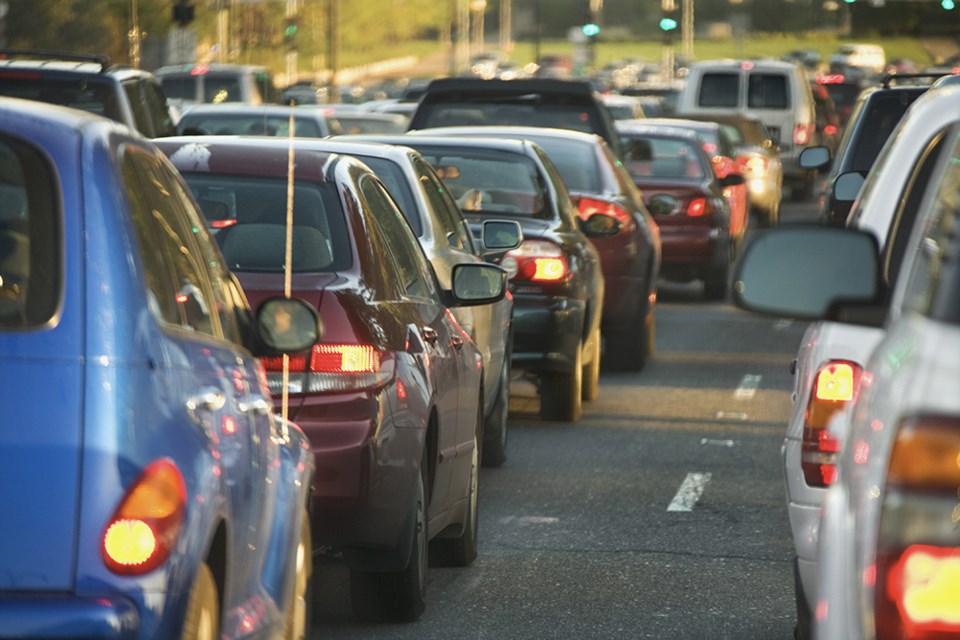Express Lanes eventually may be built north of McLean on Maryland’s side of the Potomac River, but this may depend on a healthy cash infusion from the federal government.
Maryland Gov. Wes Moore (D) announced Aug. 21 that the state’s Department of Transportation officials was submitting a formal request for federal grant funds to build multi-modal upgrades to the American Legion Bridge and Interstate 495 and 270 corridors north of there.
“The transportation network throughout Maryland and the National Capital Region must be able to get people where they need to go in a timely and reliable manner,” Moore said in a media statement. “Providing long-desired, equitable transportation solutions in the American Legion Bridge and I-270 corridors is critical to eliminating employment barriers, linking more people to high-demand jobs and stimulating local economies.”
Maryland has applied for a Multi-modal Project Discretionary Grant from the U.S. Department of Transportation to support reconstruction of the American Legion Bridge and phased implementation of managed (i.e., Express) lanes, beginning at the Legion Bridge and heading north on Interstate 495 to the I-270 West Spur.
Built in 1962, the American Legion Bridge now handles about 235,000 vehicles daily and is the lone crossing connecting the Washington metropolitan area’s most populous localities, Fairfax County and Maryland’s Montgomery County, Northern Virginia Transportation Alliance (NVTA) officials said. There are no further Potomac River crossings to the north until Point of Rocks in Loudoun County.
“Gov. Moore’s plan ensures these long-awaited improvements will become a reality. This is great news for area travelers and the economic competitiveness of our entire region,” said NVTA president Jason Stanford. “The Alliance applauds Gov. Moore for finding a multi-modal solution to address one of the region’s worst bottlenecks and move more people through one of our most congested corridors.”
Virginia transportation advocates suffered a setback in March when construction behemoth Transurban pulls out of negotiations for building high-occupancy toll lanes in Maryland from the American Legion Bridge up to Interstate 270 and beyond.
Transurban already had built Express Lanes on several Northern Virginia highways, including Interstate 495 from the Springfield Mixing Bowl to the Dulles Toll Road. The development firm now is in the process of extending two Express Lanes in both directions north of the toll road to the George Washington Memorial Parkway.
Virginia officials hoped the former Maryland Gov. Larry Hogan (R) would be able to finalize a public-private partnership to link up with Virginia’s Express Lanes and make badly needed improvements to the American Legion Bridge.
But Hogan could not complete the task before his term ended and he could not run for re-election. Moore won last fall’s election and indicated he would be reconsidering the Express Lanes proposal. Transurban in March cited “changing political landscape and environmental lawsuits that remain unresolved” as reasons why it was dropping out of Accelerate Maryland Partners, a consortium involved in the Express Lanes discussions.
Supervisor John Foust (D-Dranesville) had expressed concerns that the Virginia Department of Transportation was moving forward with its I-495 Express Lanes Northern Extension (495 NEXT) project before Maryland officials had committed to building high-occupancy toll lanes on its side of the river.
“I believe it was very predictable that a new administration in Maryland would reject Gov. Hogan’s toll-dependent, car-centric plan,” Foust said. “Unfortunately, about six years (since 2017) have passed since the Hogan administration chose to pursue a proposal that clearly was not acceptable to many Maryland residents and elected officials, and now that plan will be discarded.”
While he has not seen the details of Moore’s current plan, Foust said Maryland’s focus on replacing the bridge, prioritizing transit and ensuring equity made him optimistic would lead to a buildable project.
Maryland’s public-input-and outreach efforts likely will be substantial, perhaps drawing out the project’s length, and the whole deal hinges on billions of federal grant dollars that haven’t been awarded yet, Foust said.
Under the best-case scenario, the Maryland upgrades would not be ready until 2031, meaning Northern Virginia commuters and residents near the bridge would continue to experience significant traffic congestion for at least the next eight years, he said.
I-495 NEXT construction activity also has “severely” affected established neighborhoods along its path, according to Foust.
“The 495 NEXT project was designed to seamlessly connect to a version of an American Legion Bridge project that we now know will not be built,” Foust said. “Given the dramatic change of plans and potentially major reduction of scope for the Maryland project, I believe VDOT should determine whether and by how much it can reduce the scope of disturbance of its project to help mitigate those construction-related impacts on the adjacent communities.”
Fairfax County Board of Supervisors Chairman Jeff McKay (D) reacted positively to Maryland’s announcement.
“I am happy to see Gov. Moore is committed to replacing the American Legion Bridge and bringing much needed relief to Fairfax County commuters,” he said. “While there are no guarantees when requesting federal support, it is a welcome restart of this project.”
McKay added, “Fairfax County and Virginia remain committed to making the needed improvements on our side of the Potomac and I look forward to continuing to make sure this long-needed improvement becomes a reality.”



